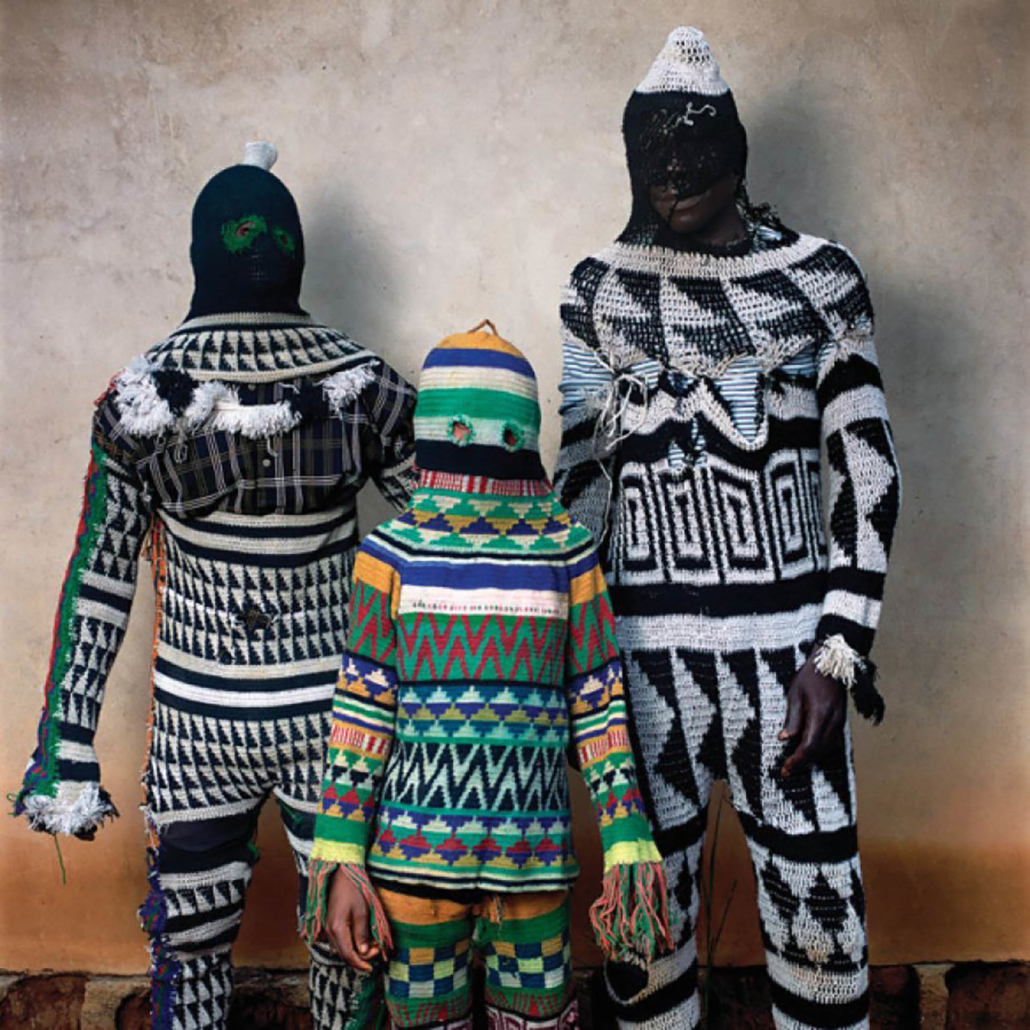This post is also available in:
 French
French
Phyllis Galembo’s striking photographic series of contemporary mask rituals has drawn national and international critical acclaim. These large-scale images are nearly life-size and explore spiritual realms with brilliant, mesmerizing colors. For more than 30 years, the artist has travelled around the world to photograph participants in contemporary masquerade events that range from traditional religious ceremonies to secular celebrations. Her portraits are celebrated by the world’s leading fine art photography editors for their stunning resonance, setting her work apart from documentary and anthropological studies. They will be shown in concert with the Museum’s historical collection of more than 40 African tribal artifacts and indigenous masks in the gallery across from Galembo’s show, for a complementary perspective.
Through her lens, the viewer gains special access to the rarely seen other-worlds, as she captures the raw and sometimes frightening aspects of ceremonial garb. Masking is a complex, mysterious and profound tradition in which the participants transcend the physical world and enter the spiritual realm. In her vibrant images, Galembo exposes an ornate code of political, artistic, theatrical, social, and religious symbolism and commentary. She has made over twenty trips to sites of ritual masquerades, capturing cultural performances with a subterranean political edge. Her photographs depict the physical character, costumes, and rituals of African religious practices and their diasporic manifestations in the Caribbean and Mexico. Galembo’s images reflect both the modern and ancient worlds. The fifteen portraits by Galembo that were selected for this exhibition reveal the meticulous detail and creative imagination of mask-making.
”The tradition of masquerading is universal and timeless, and continues today in most cultures, including western societies,” says Irvin Lippman, the Executive Director of the Boca Raton Museum of Art. ”Bringing together the Galembo photographs and masks from the Museum’s African collection underscores the cross-cultural complexity of meaning and purpose. However, what they have in common is their vitality, power, and boldness of humanity.”
The costumes in Galembo’s photographs are worn in several types of modern-day rituals. They are created to summon ancestral spirits and deities during a range of events, including agricultural hardships, land disputes, rites of passage, funerals, harvests, moments of gratitude and celebration. Galembo’s large-scale portraits in this exhibition capture the mask-oriented cultural traditions of Nigeria, Benin, Ghana and Sierra Leone.
While traveling and embedding herself for long periods in these societies, Galembo works with local assistants and translators. They negotiate the terms with elders, so that she may be granted permission to make photos of these masqueraders.
”The translators often find that gaining permission from community leaders can sometimes be quite helpful during these painstaking negotiations,” says Galembo. ”Once an agreement has been struck, I set my own lighting and place the subjects in front of a neutral backdrop that enables the eye to focus on the diversity of materials in each costume.”
The masks and costumes in these photographs are made from a wide variety of surprising materials ─ leaves, grass, patterned fabrics, burlap sacks, full-bodied crocheted yarns, colored raffia, quills, shells, and even lizard excrement. All of her photographs are shot as portraits rather than during the act of ritual. She is allowed to photograph her subjects at the very moment right before their rituals and festivities commence.
Galembo prefers her colors to be brightly saturated, enhancing the spiritual and transformative powers of these garments. ”I never see my subjects out of costume, although the masqueraders are always men, often paying homage to women,” adds Galembo.
Despite secularization and fading traditions, masquerading in Africa is abundant, robust, and far from disappearing. Most of the photographs in this exhibition reflect sacred rituals, the spiritual aspect of masquerading rather than secular celebrations. By donning garments, the masqueraders gain access to traditional knowledge, enabling them to relay critical messages to the community.
”I like the way viewers can grasp the real stories behind each image. Every mask, costume and fiber of material can represent so much to the people in these portraits. Many of these subjects created these ritual costumes because a spirit inspired them. These are people who make masks and costumes that are very spiritually motivated,” says Galembo. The modern world also finds its way into these costumes and masks with the usage of plastic bags, cardboard, and found objects.
From 28/01/2020 to 20/09/2020
BOCA RATON MUSEUM OF ART
FL 33432 BOCA RATON
United States
Opening hours : Wednesday – Sunday from 11 am to 7 pm, (Early Member Mornings: Thursday – Saturday from 10 am to 7 pm)
Phone : 561 392 25 00
info@bocamuseum.org
www.bocamuseum.org



